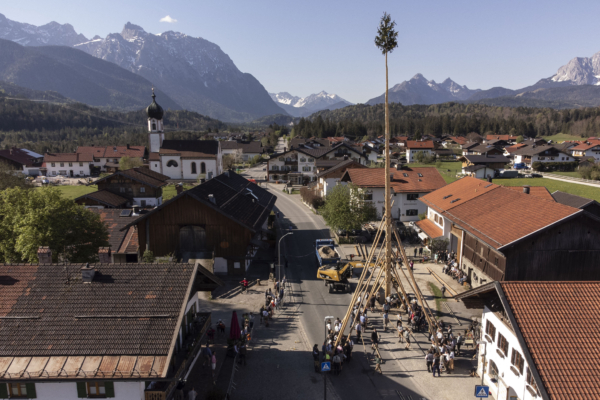With the arrival of the International Labour Day on May 1st, many countries celebrate this global holiday in different ways, reflecting their diverse historical backgrounds, cultural traditions, and social customs. Before the existence of Labour Day, this day was also a traditional festival in many European countries, known as May Day.
On this day, people in many regions of Europe erect a tall tree trunk on open grasslands or squares, adorned with flower crowns, bouquets, or wreaths, known as the “Maypole.” People dance and sing around the Maypole, engaging in various traditional activities to celebrate the arrival of spring. In some parts of southern Germany, particularly in Bavaria, the Maypole festivities are particularly grand, attracting hundreds and thousands of people from all over each year.
The tradition of erecting the Maypole originates from ancient Roman celebrations in honor of the goddess of flowers, symbolizing hopes for fertile land, good weather, and bountiful harvests.
In German, the Maypole is called “der Maibaum,” and it is no ordinary tree – it must be tall and straight to be suitable for transformation into a Maypole.
Most communities in southern Germany have an organization called “Burschenverein,” consisting of a group of young people. In the weeks leading up to May 1st, members of these clubs venture into the forest to find tall and straight pine or fir trees, typically ranging from 20 to 25 meters in height, with some reputed to exceed 50 meters.
The selected tree undergoes pruning, polishing, and painting before being ceremoniously erected in a prominent location, usually in town squares or markets. The hoisting of the Maypole is usually done manually, with ropes and wooden supports carefully securing the tree upright on the ground. However, for safety and other considerations, many regions, especially larger cities, now employ machinery for this operation.
In the pictures below, we see on May 1, 2025, in the town of Kruen in Bavaria, Germany, young men in traditional Bavarian attire working together to erect a tall Maypole.

